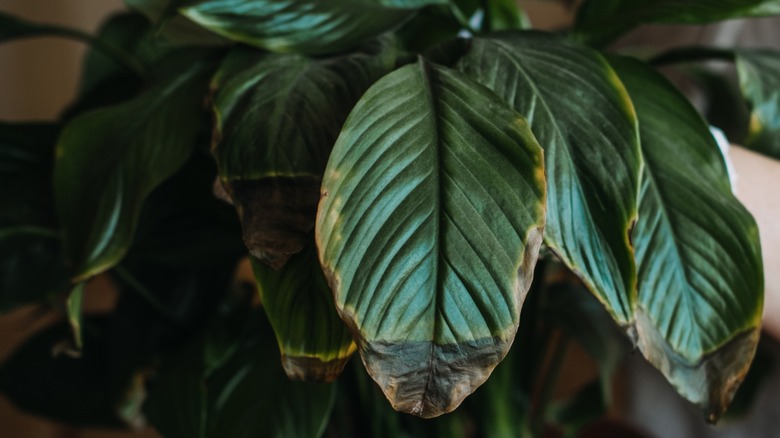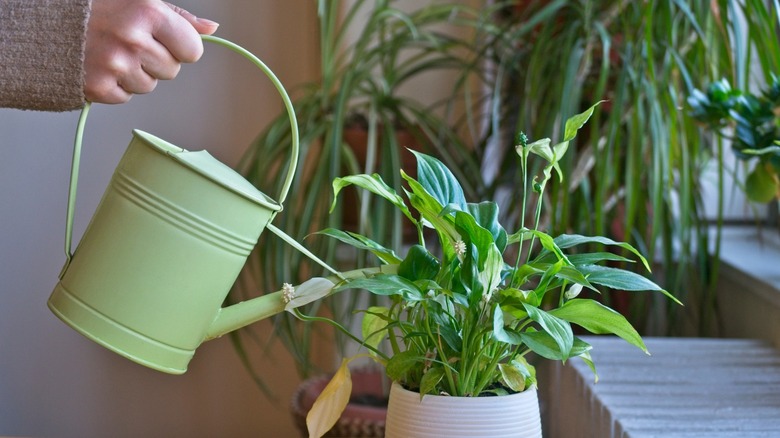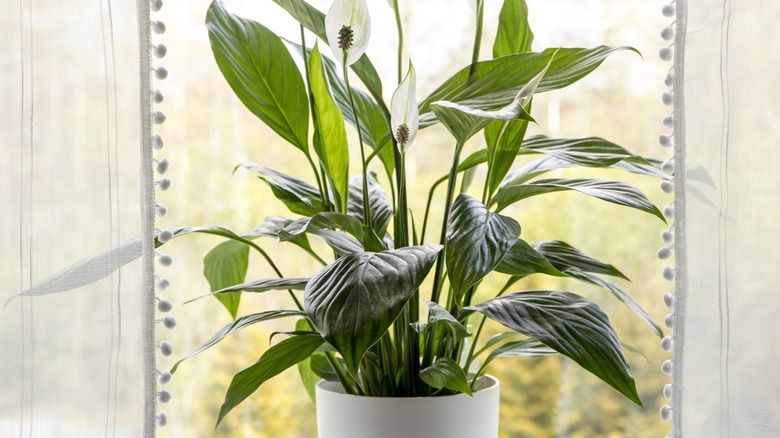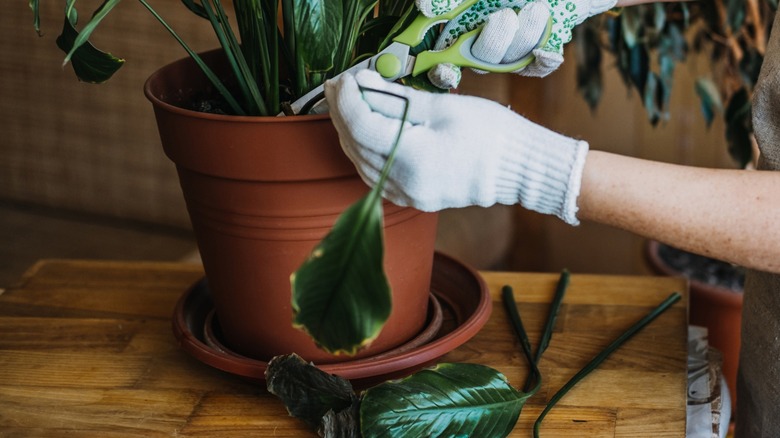Why Your Peace Lily's Leaves Are Turning Black (And How To Fix It)
It's unsettling to see black leaves on your peace lily but the truth is, they're rarely ever random– they're more like signals. Sometimes, blackening is simply part of the natural aging process. Older leaves, especially near the base, gradually lose color, first fading to yellow, then brown or black before falling away. If the rest of the plant looks lush and it's only the lower leaves affected, there's likely nothing to worry about.
However, other types of blackening can signal specific problems, and where the black appears matters. Blackened tips, for example, often point to a buildup of salts in the soil. This can come from overfertilizing or consistently using mineral-heavy tap water. You might also see this if your water is treated with fluoride or chlorine. If the edges of the leaves are turning black, it could be due to temperature shock, maybe your plant caught a draft near a window or heater, or it's not getting enough humidity. Peace lilies naturally thrive in moist, warm air, and when indoor conditions get too dry, the edges suffer first.
If the entire leaf turns black and soft, that's more serious. It often indicates fungal infection or rot. And in most cases, that rot starts in the roots. Now, don't go panicking just yet. Peace lilies are resilient plants that bounce back well once you understand what the problem is and adjust accordingly.
You're giving your peace lily too much water or fertilizer
One of the most common mistakes sure to kill your peace lilies is overwatering. These plants like evenly moist soil, but they don't tolerate soggy roots. When the potting mix stays too wet for too long, the roots begin to suffocate and rot. That cuts off water and nutrients to the leaves, which then collapse and turn black.
If you're using tap water, especially in areas with hard water, you might be hurting your peace lily too. Hard water contains high levels of minerals like calcium and magnesium, which can build up in the soil over time and lead to stressed roots and dark leaves. Peace lilies are particularly sensitive to fluoride and chlorine as well. That's why horticulture experts recommend watering with distilled, filtered, or rainwater instead.
Too much fertilizer can have a similar effect. Even though peace lilies aren't heavy feeders, frequent applications of synthetic fertilizer can overwhelm the roots. The resulting salt buildup can burn root tissue and show up as black or brown tips. If the blackening started after a recent feed, that's likely the culprit. Since peace lilies can be pretty sensitive to chemical fertilizers, you can make your own organic peace lily fertilizer using simple ingredients you probably already have in your pantry.
Your peace lily just isn't happy where it is or it's diseased
As popular houseplants, peace lilies are one of the indoor plants that don't need much sun to survive. In fact, direct sunlight can scorch their leaves, especially if the plant was raised in shade or moved suddenly to a sunnier spot. You may suddenly start to notice black, crispy patches. Since they evolved on the rainforest floor, beneath a thick canopy, they thrive best in filtered or indirect light.
Peace lilies also prefer stable temperatures between 65 to 80 degrees Fahrenheit. Any sudden exposure to cold drafts, air conditioner vents, or sudden temperature drops can damage leaf tissue, particularly along the edges. Humidity matters too. When indoor air becomes too dry, especially during winter months when heaters are on, the plant may lose moisture faster than it can absorb it through the roots. Sometimes, low humidity and dry soil work together to stress the plant even more. When the air is dry and there's not enough moisture in the soil, peace lilies can start to show signs that they're struggling, which is usually a curling and browning of the leaves.
When the leaves turn fully black, feel soft, or start to smell, it's most likely a fungal infection such as root rot or leaf blight. Pathogens like Phytophthora and pythium thrive in waterlogged soil with poor drainage. These conditions rob the roots of oxygen, allowing fungi to spread up through the stems and leaves.
How to revive your peace lily?
The first step really is to pay attention to what the black leaves are telling you and adjust your care accordingly. When you do, your peace lily can bounce back to its glossy, green self in no time. If the blackening appeared after a round of fertilizer, flush the soil with clean, filtered water and ease up on feeding. A diluted liquid fertilizer, applied once a month during the growing season, is usually enough for peace lilies.
Next, form a habit of always checking the soil before watering, and make sure your pot has proper drainage holes. Relocate the pot of peace lily to a spot with bright but indirect light, and switch to filtered or distilled water if mineral buildup is a concern. If you suspect root rot or salt accumulation, repotting into fresh, well-draining soil may give your peace lilies the reset it needs. For fungal infections, you need to trim away your peace lily's roots and any soft or blackened areas with sterilized scissors before replanting. Choose a container with good airflow and never let water sit in the saucer.
Hold off on feeding unless the plant is clearly in an active growth phase. Prune any damaged leaves to help the plant redirect energy toward new, healthy growth. You can also raise humidity by placing the plant on a pebble tray, misting regularly, or running a nearby humidifier.



